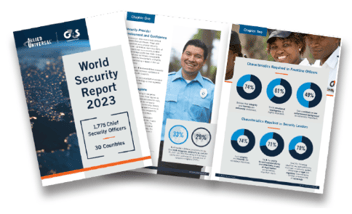Unleashing the Power of Security Professionals: Overcoming Perceptions and Shaping Influence
Unleashing the Power of Security Professionals: Overcoming Perceptions and Shaping Influence
In the corporate world, security professionals often face an uphill battle. Despite their crucial role in protecting organisations from ever-evolving threats, their business peers frequently view them as undereducated. This perception undermines their authority and limits their ability to make strategic decisions aligning with the organisation's goals. In a controversial yet engaging tone, let's delve into the ASIS report, "THE INFLUENCE OF SECURITY RISK MANAGEMENT: Understanding Security's Corporate Sphere of Risk Influence," released in June 2023, to shed light on these challenges and explore potential solutions.
Limited influence:
Corporate security professionals are often labelled as specialised technical professionals rather than business enablers. This pigeonholing restricts their decision-making authority and influence compared to general managers. It's time to break free from this stereotype and showcase the multifaceted skills and knowledge that security professionals possess. By demonstrating how security events impact strategic objectives, they can increase their influence and establish themselves as indispensable contributors to organisational success and business growth.
Operational vs strategic focus:
Climbing up the risk hierarchy, security is frequently viewed as an operational risk concern with limited strategic implications. While general managers prioritise risks directly impacting strategic objectives, security risks are often relegated to a lower position. To enhance their influence, security professionals must effectively convey how security incidents can disrupt strategic goals, causing reputational damage, financial losses, or regulatory non-compliance. They can secure a seat at the decision-making table by linking security to broader organisational risk categories.
Lack of enterprise-level recognition:
While cybersecurity risk receives due attention due to its strategic importance, integrating security into the bigger picture, physical security risks often remain overlooked, considered merely a subset of operational risk management. Security professionals must strive to integrate security disciplines collectively into the broader organisational risk framework. By understanding the interconnectedness of risks and their impact on the enterprise, security professionals can elevate their influence and garner the recognition they deserve.
Communication with decision-makers:
Speaking the language of risk, security professionals need to bridge the communication gap with corporate decision-makers, including general managers. Developing the skills to identify, engage, and communicate directly with key stakeholders is essential. By emphasising the importance of the security risk message and aligning it with organisational objectives, security professionals can effectively convey their value proposition and gain the necessary buy-in for decision-making authority.
Separation of risk diagnosis and treatment:
Security professionals often need more autonomy to move from risk diagnosis to treatment with approval from higher-level managers. Recognising that risk diagnosis and treatment are distinct decision processes is vital. Security professionals can facilitate informed decision-making and drive timely risk mitigation efforts by articulating the business impact of risks and providing cost-benefit analyses for treatment options.
Organisational context:
Legislation and compliance-driven actions, the influence of security professionals is significantly influenced by the organisational context. Security professionals tend to wield more authority in environments where security is legislatively mandated, such as industries dealing with sensitive data or critical infrastructure. However, in non-mandated settings, security risk management often takes a backseat to compliance-driven actions, hampering the influence of security professionals. Advocating for proactive risk management strategies that prioritise security and foster a culture of proactive protection across all industries is crucial.
Professional respect and perception:
Breaking the stereotypes, corporate security faces the challenge of being perceived as a profession associated with policing or military backgrounds rather than formal university education. Security professionals must enhance their business acumen, pursue certifications, and bridge the gap between academia and practice to gain professional respect. By acquiring the necessary skills and qualifications, they can challenge misconceptions and assert their expertise on par with traditional professions like law or accounting.
Language and communication barriers:
Translating risks into business terms, the multitude of risk management models and terminology often needs clarification and hampers the influence of security professionals. To overcome this challenge, security professionals must become proficient in translating security risks into the language of business. By articulating risk impacts using business metrics and demonstrating the alignment between security measures and organisational objectives, security professionals can effectively convey their message and garner the attention it deserves.
Individual characteristics and leadership:
Unlocking personal influence, while security as a specialised field may face inherent limitations in corporate influence, individual security professionals can strive to achieve higher levels of impact through personal leadership. Education, experience, communication skills, and the organisational risk context all play a role in determining an individual's influence. By continuously developing these characteristics and demonstrating leadership in their respective roles, security professionals can transcend the constraints and drive change within their organisations.
Conclusion:
The challenges faced by security professionals in gaining influence and recognition within their organisations are real and multifaceted. However, by embracing the recommendations outlined in the ASIS report, security professionals can break free from undereducated perceptions and shape their sphere of influence.
It is time to redefine the role of security professionals as indispensable business enablers, working hand in hand with other departments to safeguard organisational interests and contribute to long-term success.
Together, let's unleash the power of security professionals and create a safer and more resilient future for our organisations.
Get the full report at https://store.asisonline.org/the-influence-of-security-risk-management-understanding-security-s-corporate-sphere-of-risk-influence.html








